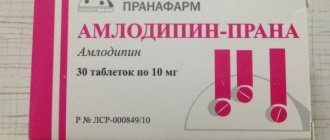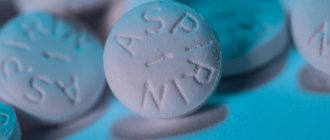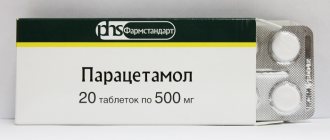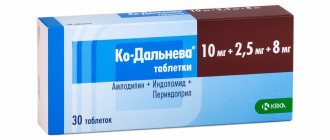Hypertension, coronary heart disease, and angina pectoris are very common health problems for modern people today. Moreover, such diseases have become significantly “younger” - if previously mature patients suffered from them, today even young people are diagnosed with coronary artery disease and hypertension. To treat these health problems, the pharmaceutical industry produces many drugs, one of which is Amlotop. Instructions for use and reviews about it will be discussed below.
Pharmacological group of the drug
For the drug "Amlotop", the instructions for use included by the manufacturer in each package of the drug indicate a pharmaceutical accessory - a blocker of "slow" calcium channels. This is a fairly broad group of drugs, including several positions of active substances that have a similar effect, but differ in their effect on heart rate, pharmacokinetics, and tissue susceptibility.
Microelements play an important role in the human body. So, for example, upon penetration into tissue cells, calcium ions activate bioenergetics processes such as phosphorylation of proteins (one of the stages of biosynthesis), metabolism of ATP (adenosine triphosphoric acid - a source of energy for metabolic processes in the body) into cAMP (cyclic adenosine monophosphate, playing the role of an intermediary between certain hormones and tissue cells). But, like any other components, these substances must be present in the cells in a certain amount. If for some reason their concentration increases, then cellular metabolic processes require an increase in oxygen concentration, which can lead to destructive changes. The transfer of calcium Ca2+ ions (transmembrane transfer) occurs through special calcium channels, which are quite complex and diverse. Today, scientists have found that calcium channels, which have a complex structure of transmembrane proteins, can be divided into two types:
- voltage-dependent, through which Ca ions pass when the membrane potential drops below a certain level;
- receptor-dependent, allowing a flow of Ca ions through cell membranes when cell receptors interact with specific agonists, for example, acetylcholine, catecholamines, serotonin, histamine.
These chemical-physical processes play a vital function in cellular metabolism. Calcium channels are also divided into types that differ from each other in certain properties. They are designated by letter indices - L, N, P, Q, R, T.
L-type channels get their name from the English words long-lasting - long-lived, larde - large, depending on conductivity - they are slowly activated when the cell membrane is depolarized, which determines the entry of Ca2+ ions into the cell and the formation of a slow calcium potential.
L-type channels are found in cardiomyocytes, in smooth muscle cells of arterial vessels and most internal organs, as well as in cells of the cardiac conduction system, in skeletal muscles and in platelets. It is to the group of drugs that delay the work of these intercellular adapters that the drug “Amlotop” and analogues of this drug belong.
Compatibility with other drugs
Plasma concentrations of amlodipine increase when taking Amlotop and microsomal oxidation inhibitors simultaneously. The opposite effect is observed when combined with inducers of microsomal liver enzymes.
The antihypertensive effect of Amlotop can be weakened when combined with non-steroidal anti-inflammatory drugs, estrogens, α-agonists, and sympathomimetics.
An increase in the hypotensive and antianginal effect of the drug is observed when thiazide or loop diuretics, β-blockers, nitrates, angiotensin-converting enzyme inhibitors, and Verapamil are simultaneously included in therapy. A similar effect can be observed when combined with Amiodarone, α1-blockers, Quinidine, antipsychotics, and other slow calcium channel blockers.
Amlotop may enhance the neurotoxic effect of some drugs. This applies to lithium preparations. The effectiveness of the medicine may be reduced when taking calcium supplements.
In what form can the drug be purchased?
The drug "Amlotop" is produced by several pharmaceutical companies. But there is only one form of release - in the form of tablets, which, however, have different contents of the active component. It can be 5 or 10 mg in one unit - a tablet. The drug "Amlotop", its analogues, produced in different dosage forms, have an antianginal (relieving angina pain and attack) and hypotensive (lowering blood pressure) effect. The group of drugs that have a similar effect is very extensive. But the question of which therapy to carry out for a particular patient can be resolved by the attending specialist, taking into account many circumstances. Taking Amlotop without consulting a doctor or on the advice of friends is strictly prohibited!
Dosage
At the initial stage, Amlotop is prescribed in a volume of 5 mg. Take it once. This dosage is appropriate for both hypertension and angina. It is possible to increase the dose to 10 mg.
In patients with hypertension, to maintain the effect, the dosage should be no more than 5 mg per day. One 5 mg tablet can be divided into two days.
If the patient has exertional angina or Prinmetal, then Amlotop is indicated in a volume of 5-10 mg per day. Prevention of attacks is carried out by taking 10 mg of the drug per day.
In case of short stature, low body weight, old age, or impaired liver function, it is recommended to limit Amlotop intake to 2.5 mg. This dosage is appropriate to obtain a hypotensive effect. The antianginal effect is ensured by daily intake of the drug in a volume of 5 mg.
Compound
One of the antihypertensive drugs widely used in medical practice is the drug Amlotop. The instructions for it indicate the active substance - an amlodipine derivative - besylate. The following additional components are used:
- calcium stearate;
- colloidal silicon dioxide;
- croscarmellose sodium;
- lactose monohydrate;
- microcrystalline cellulose.
These substances do not play any therapeutic role, performing only formative functions.
Amlotop tablets, both 5 and 10 mg, have a round shape, they are flat, and have beveled edges. Each unit of the drug is equipped with a median line on one side for ease of dividing the tablet. The medicine is packaged in 10 or 30 pieces in blister cells with aluminum protective film. Plates with tablets of 2, 3, 5, 10 pieces are folded into cardboard packs.
Action of the active component
As noted, the instructions for use of Amlotop indicate the active substance - amlodipine besylate. It is a white crystalline powder, practically insoluble in water. It has antianginal, hypotensive and vasodilating properties. This spectrum of activity is due to the fact that it blocks calcium channels, reducing the activity of the transition of calcium ions through the cell membrane into the cell. Amlodipine typically works in vascular smooth muscle cells, although it works somewhat worse in cardiomyocytes. This substance dilates coronary and peripheral arteries and arterioles, which determines its antianginal effect. Due to this effect, the drug reduces the severity of myocardial ischemia during angina pectoris, reduces peripheral vascular resistance and myocardial oxygen demand, prevents spasm of the coronary arteries, including those caused by smoking, thereby reducing the load on the heart muscle.
The hypotensive effect of the drug "Amlotop" is based on its vasodilating (relaxing) effect on vascular smooth muscles. For those who suffer from stable angina, using the drug in a single daily dosage can increase immunity to physical activity. The medicine also reduces the potential risk of developing angina attacks and ischemic depression, which has a direct impact on the use of nitroglycerin and other nitrates, reducing their dose and number of uses.
The drug "Amlotop" reduces the level of left ventricular myocardial hypertrophy, but does not affect its contractility and conductivity, does not cause an increase in heart rate at the reflex level, and inhibits aggregation, that is, sticking together of platelets. The drug also has a positive effect on kidney function, potentiating the glomerular filtration rate and having some natriuretic effect. The drug "Amlotop" has also found application in nephropathy associated with diabetes.
This medicine does not affect the metabolism in the body in any way, and therefore it can be taken by patients with diabetes, bronchial asthma, and gout. Also, taking this drug does not increase the risk of death for patients diagnosed with chronic heart failure of functional class III-IV, but with the same disease V-VI FC of non-ischemic origin, there is a potential for the development of pulmonary edema.
Effect of the drug
The drug is a dihydropyridine derivative and provides not only a hypotensive, but also an antianginal effect. When taken, a bond is formed between the substance and dihydropyridine receptors. As a result, calcium channels are blocked, and the transition of calcium ions into cellular structures is reduced.
The drug dilates coronary and peripheral arteries and arterioles, which causes an antianginal effect. In patients with angina pectoris, myocardial ischemia becomes less pronounced. Peripheral vascular resistance decreases due to the expansion of peripheral arterioles.
Due to the expansion of the main coronary arteries and arterioles, oxygen enters the myocardium in greater quantities. This applies to both ischemic and unchanged areas of the heart muscle. In patients with angina pectoris under the influence of Amlotop, the time required to perform physical activity increases. The frequency of attacks is reduced, as is the need to take Nitroglycerin.
The hypotensive effect of Amlotop is long-lasting, but depends on the dose. This effect provides a vasodilating effect on vascular smooth muscle. With a single dose of medication, blood pressure decreases with clinical significance for a day.
The pressure decreases gradually. When taking the medication, exercise tolerance and left ventricular ejection fraction decrease.
Absorption of amlodipine from the gastrointestinal tract is slow, so the substance reaches its maximum concentration in plasma no earlier than 6 hours (no later than 9 hours). The rate of absorption is not affected by food intake. A smaller part of the substance enters the blood; it is mainly distributed throughout the tissues.
Amlodipine is metabolized in the liver slowly but extensively (90%). In this case, inactive metabolites without significant pharmacological activity are formed.
The half-life of the substance taken depends on its amount. With a single dose it takes 30-48 hours, with a repeated dose – 45 hours. Most of the ingested volume is excreted in the urine; about a quarter of the volume is excreted in feces and breast milk. The elimination of amlodipine slows down in old age, but this factor has no clinical significance.
When is the drug prescribed?
The instructions for use of the drug "Amlotop" list the diseases and conditions for which this drug is prescribed:
- arterial hypertension;
- vasospastic angina;
- stable angina;
- essential hypertension.
This drug can be used both as a single agent and in complex therapy of these diseases. Only the attending physician can prescribe it for use, taking into account all the necessary nuances - medical history, concomitant diseases, state of health.
How the drug works in the human body
One of the drugs that has a blocking effect on calcium channels is Amlotop. The instructions for its use indicate that the tablets are taken orally. The active component amlodipine is well absorbed in the gastrointestinal tract, with its bioavailability ranging from 64 to 80%.
In the patient's body, the active component of the drug is distributed mainly in the tissues and not in the blood. Metabolizes amlodipine in the liver, and the metabolites do not have significant pharmacological activity. The half-life is approximately 45 hours. In elderly patients over 65 years of age, this time is slightly longer - about 65 hours, but this indicator has no clinical significance. The same factor applies to patients suffering from renal and/or liver failure. The drug "Amlotop" is excreted from the body mainly by the kidneys, with 10% excreted unchanged. The rest is excreted with bile through the intestines. A doctor prescribing Amlotop for use should remember that the active substance of this medicine penetrates the blood-brain barrier. If necessary, it is also necessary to take into account that the medicine is not removed from the body during hemodialysis.
Pharmacokinetics
A number of chemical and biological processes appear:
- Absorption – the active substance “Amlotop” begins to be absorbed in the stomach and intestines. Bioavailability is 60-65%, and the maximum value in the blood is observed 7-12 hours after administration. The equilibrium concentration of the substance in the blood is achieved after about a week of treatment. Eating does not affect the absorption of the active component,
- Distribution – 90-97% binds to blood proteins, volume of distribution is 21 l/kg. Can penetrate the blood-brain barrier and also into breast milk.
- Metabolism – the active component of “Amlotop” undergoes slow metabolism (about 90%) with the formation of inactive metabolic products after the process. The rate of liver cleansing is quite slow,
- Excretion - the half-life of the drug components is about 35-50 hours, 25-30% is excreted together with bile and feces, about 70% is excreted by the kidneys, 10 percent in its original form, 60% in the form of metabolic products.
The pharmacokinetics of Amlotop in certain clinical situations shows that in elderly patients, as well as in people with heart and liver failure, the half-life increases to 60-65 hours, while renal failure does not affect this indicator.
Hemodialysis (extrarenal blood purification) is not eliminated.
When should the drug not be taken?
Many people suffering from coronary heart disease and angina use Amlotop tablets for outpatient treatment. The instructions for use of this medicine indicate contraindications:
- arterial hypotension if the measured systolic blood pressure is less than 90 mmHg. Art.;
- heart failure after myocardial infarction, which is hemodynamically unstable;
- cardiogenic shock;
- collapse;
- obstruction of the outflow tract of the left ventricle;
- aortic stenosis;
- increased sensitivity.
Also, the drug should not be taken in children under 18 years of age due to the lack of clinical studies. The use of this drug is not recommended for pregnant and lactating women. The drug is prescribed with extreme caution for hypertrophic cardiomyopathy, non-ischemic chronic heart failure of functional class III-IV, disorders of active liver function, mitral stenosis, sick sinus syndrome, expressed by tachycardia and bradycardia, acute myocardial infarction.
special instructions
Use with caution in patients with liver failure, chronic heart failure of non-ischemic etiology of functional class III-IV according to the NYHA classification, unstable angina, aortic stenosis, mitral stenosis, hypertrophic obstructive cardiomyopathy, acute myocardial infarction (and within 1 month after it), SSSU (severe tachycardia, bradycardia), arterial hypotension, when used simultaneously with inhibitors or inducers of the CYP3A4 isoenzyme. With the use of amlodipine in patients with chronic heart failure (class III and IV according to the NYHA classification) of non-ischemic origin, an increase in the incidence of pulmonary edema was noted, despite for no signs of worsening heart failure. In elderly patients, T1/2 may increase and amlodipine clearance may decrease. Dose changes are not required, but more careful monitoring of patients in this category is necessary. The effectiveness and safety of the use of amlodipine in hypertensive crisis has not been established. Despite the absence of withdrawal syndrome with slow calcium channel blockers, it is advisable to discontinue treatment with amlodipine gradually. Clinical data on the use of amlodipine in there are no pediatrics.
Possible side effects
The use of Amlotop is possible only on the recommendation of a doctor. Like any medicine, it may cause side effects, including:
- arthralgia;
- arthrosis;
- asthenia;
- ataxia;
- bradycardia;
- Pain in the eyes;
- chest pain;
- backache;
- vasculitis;
- gastritis;
- hypoesthesia;
- gum hyperplasia;
- headache;
- dizziness;
- dermatitis;
- diplopia;
- significant decrease in blood pressure;
- itchy skin;
- insomnia;
- myocardial infarction;
- nosebleeds;
- flatulence;
- atrial fibrillation;
- myalgia;
- myasthenia gravis;
- visual impairment;
- general malaise;
- peripheral neuropathy;
- fainting;
- dyspnea;
- orthostatic hypotension;
- peripheral edema;
- feeling of heartbeat,
- paresthesia;
- increased sweating;
- rush of blood to the scalp (face);
- thrombocytopenic purpura;
- development or worsening of chronic heart failure;
- vomit;
- rhinitis;
- drowsiness;
- muscle cramps;
- rash;
- ventricular tachycardia;
- nausea;
- anxiety;
- increased fatigue.
pharmachologic effect
Selective class II calcium channel blocker. The antihypertensive effect is due to a direct relaxing effect on vascular smooth muscle. It is assumed that the antianginal effect of amlodipine is associated with its ability to dilate peripheral arterioles; this leads to a decrease in peripheral vascular resistance, and reflex tachycardia does not occur. As a result, there is a decrease in myocardial oxygen demand and energy consumption by the heart muscle. On the other hand, amlodipine appears to cause dilation of large-caliber coronary arteries and coronary arterioles in both intact and ischemic areas of the myocardium. This ensures the supply of oxygen to the myocardium during spasms of the coronary arteries.
How to take the medicine correctly?
The instructions for use for Amlotop tablets indicate that they are taken once, regardless of the time of meal. The tablets must be taken with a sufficient amount of plain water.
Usually start with 5 mg, then, if necessary, increase to 10 mg per day, this is considered the maximum allowable dose. This dosage change is carried out 1-2 weeks after the start of treatment with Amlotop. If you need to quickly increase the dose of this drug, then this should only be done under the supervision of a specialist. You cannot independently change the number of tablets per dose, or take this medicine more than once a day!
If the patient is treated with antihypertensive drugs, then the initial daily dose of Amlotop can be 2.5 mg, since the effect of lowering blood pressure will be cumulative.
Therapy with this medicine for special groups of people with low body weight, short stature, old age, and problems with liver function is carried out individually.
Dose calculation
The dosage of the drug Amlotop is calculated by the doctor, depending on the reason for the prescription to the patient. Oral administration begins with arterial hypertension and angina pectoris with 5 mg once a day. If necessary, the dose can be doubled, but no more.
Note! Treatment of high blood pressure in patients with low body weight, impaired liver function, and elderly patients should not exceed a dose of 2.5 mg.
Calculation of the dose of the drug Amlotop
When using Amlotop together with diuretics, ACE inhibitors (angiotensin converting enzyme) and beta blockers, dose adjustment is required on an individual basis. The duration of the course is determined by the doctor.
Interactions with other drugs
Be sure to read the instructions for use of Amlotop. At what pressure can and cannot be taken? The manufacturer of the drug indicates in its instructions that the medicine cannot be used if the systolic blood pressure is below 90 mm Hg. Art. It is also necessary to take into account the compatibility of the active component with other drugs that the patient is taking.
This medicine can be safely used with drugs such as alpha-blockers, beta-blockers, thiazide diuretics or angiotensin-converting enzyme (ACE) inhibitors, non-steroidal anti-inflammatory drugs, including indomethacin, antibiotics, hypoglycemic agents. It is important to remember that calcium supplements can significantly reduce the activity of the calcium channel blocker amlodipine. Neuroleptic drugs in combination therapy with Amlotop can enhance its hypotensive effect. If the patient is taking this drug and needs treatment with antiviral drugs, then the increase in the concentration of amlodipine in the blood should be taken into account and its single dosage should be reduced.
Interaction
With the concomitant use of inhibitors in the blood, an increase in the concentration of the active element “Amlotop” is observed, which can cause the formation of effects unfavorable for the body. Inducers of microsomal liver enzymes reduce the level of antihypertensive drugs.
Non-steroidal anti-inflammatory drugs slow down the treatment of hypertension and weaken the effect of Amlotop. Concomitant treatment with alpha-adrenergic stimulants, estrogens, sympathomimetics, “Indomethacin” is especially not recommended.
“Verapamil”, organic nitrates, ACE inhibitors effectively eliminate the symptoms of angina pectoris.
Diuretics and beta-blockers when taken concomitantly with Amlotop increase the effectiveness of the latter.
Psychotropic drugs, alpha-blockers can increase the hypotensive effect of Amlotop.
Side effects often occur with the use of lithium drugs, such as nausea, vomiting, diarrhea, tremors of the limbs, and tinnitus.
Calcium preparations, when interacting with Amlotop, reduce the effect of blockers of exclusively “slow” calcium channels.
Cimetidine does not affect the mutual action in any way.
Procainamide, “Quinidine” increase the QT interval, which is immediately visible when performing a cardiogram.
Single use of antacids that contain aluminum and magnesium does not affect the pharmacokinetics of Amlotop.
When used concomitantly with the drug “Digoxin”, the level of the latter in plasma and clearance do not change.
“Ritonavir” (an antiviral drug) increases plasma concentrations of slow calcium channel blockers.
Some features of treatment with Amlotop
The use of the drug "Amlotop" requires the patient to follow the doctor's recommendations regarding dosage and regimen.
The treatment has not been studied in children or breastfeeding women, so the possibility of its danger or effectiveness for these categories of patients is not known. A pregnant woman should only be prescribed this medicine if the risk to the fetus is minimal compared to the benefit to the mother. It is better to choose another drug if necessary. The drug, when used once, does not have a negative effect on concentration, but during a course of treatment it is not recommended to drive a car or carry out work that requires increased concentration. Also, long-term treatment with this drug requires not only the strictest possible adherence to dental and oral hygiene, but also regular visits to the dentist in order to promptly eliminate the negative manifestation of its effect on the oral cavity, timely detect gum hyperplasia, their bleeding and take measures to preserve the health of teeth and gums .
Are there any analogues?
All the information necessary for the doctor and the patient is contained in the instructions for use about the drug "Amlotop". Its analogues can be found in any pharmacy. These are such products as “Normodipin”, “Tenox”, “Amlodak”, “Norvask”. You can also purchase a generic version of Amlotop in pharmacy chains; this drug will be named after the active ingredient - Amlodipine, and some pharmaceutical companies add their own name to this name, for example, Amlodipine - Zentiva.
A doctor may prescribe a drug that has the same pharmacological activity, but has a different substance as an active component. For example, verapamil, lecranidipil, cinnarizine, which work in drugs called “Verogalid”, “Lerkamen”, “Stugeron”. The correct choice of medication, duration and completeness of the course of therapy, determined by the treating specialist, will help cope with the disease efficiently, without side effects.
What do experts say about the drug?
Amlotop tablets are often prescribed to patients with high blood pressure and the risk of developing myocardial infarction. Doctors speak of this drug as a fairly effective remedy that can provide the necessary effect even with a single use. For the drug "Amlotop", the instructions for use contain important information for the patient, in particular, the dosage. In some cases, it can be adjusted by the doctor in accordance with the patient's medical history and the course of the disease. Doctors note the high effectiveness of this drug for normalizing angina attacks, preventing the development of hypertension and reducing the potential danger of developing myocardial infarction. From the point of view of specialists, the occurrence of side effects is most often noted in the form of swelling of the lower extremities and dizziness. Other undesirable effects of the drug occur very rarely.
Drug interactions
It is possible to enhance the antianginal and antihypertensive effect of slow calcium channel blockers when used together with thiazide and loop diuretics, ACE inhibitors, beta-blockers and nitrates, as well as enhance their antihypertensive effect when used together with alpha1-blockers, antipsychotics. Although when studying amlodipine negative inotropic effects were usually not observed, however, some slow calcium channel blockers may enhance the negative inotropic effects of antiarrhythmic drugs that cause QT interval prolongation (for example, amiodarone and quinidine). Simultaneous repeated use of amlodipine at a dose of 10 mg and simvastatin at a dose of 80 mg leads to an increase in the bioavailability of simvastatin by 77%. In such cases, the dose of simvastatin should be limited to 20 mg. Antiviral drugs (for example, ritonavir) increase plasma concentrations of slow calcium channel blockers, incl. amlodipine. With the simultaneous use of sympathomimetics and estrogens, a decrease in the antihypertensive effect is possible due to sodium retention in the body. Neuroleptics and isoflurane enhance the antihypertensive effect of dihydropyridine derivatives. With the simultaneous use of inhalation anesthesia, the hypotensive effect may be enhanced. With the simultaneous use of amiodarone, the antihypertensive effect may be enhanced. With the simultaneous use of lithium carbonate, manifestations of neurotoxicity are possible (including nausea, vomiting, diarrhea, ataxia, tremors and/or tinnitus ). With simultaneous use, orlistat reduces the antihypertensive effect of amlodipine, which can lead to a significant increase in blood pressure and the development of a hypertensive crisis. With simultaneous use of indomethacin and other NSAIDs, the antihypertensive effect of amlodipine may be reduced due to inhibition of prostaglandin synthesis in the kidneys and fluid retention under the influence of NSAIDs. With simultaneous use the use of quinidine may enhance the antihypertensive effect. Calcium preparations can reduce the effect of slow calcium channel blockers. With simultaneous use of diltiazem (inhibitor of the CYP3A4 isoenzyme) at a dose of 180 mg and amlodipine at a dose of 5 mg in elderly patients (from 69 to 87 years) with arterial hypertension There is an increase in the bioavailability of amlodipine by 57%. Concomitant use of amlodipine and erythromycin in healthy volunteers (18 to 43 years of age) does not lead to significant changes in amlodipine exposure (22% increase in AUC). Although the clinical significance of these effects is unclear, they may be more pronounced in older patients. Potent inhibitors of the CYP3A4 isoenzyme (for example, ketoconazole, itraconazole) may increase the plasma concentration of amlodipine to a greater extent than diltiazem. Amlodipine and inhibitors of the CYP3A4 isoenzyme should be used with caution. There is no data on the effect of inducers of the CYP3A4 isoenzyme on the pharmacokinetics of amlodipine. Blood pressure should be carefully monitored while using amlodipine and inducers of the CYP3A4 isoenzyme.
Patient Feedback
The drug "Amlotop" receives mostly grateful reviews from patients. Those who praise the medicine note its convenient once-a-day use, its effectiveness in normalizing blood pressure, relieving symptoms of angina pectoris and coronary heart disease. Some are upset by the appearance of side effects - swelling in the legs, dizziness, headaches. Some patients, due to the pronounced severity of such an unnecessary effect of the drug, were forced to abandon it, although almost everyone is satisfied with its price and Russian production. Many patients note that they use the drug only to lower blood pressure, although some thank the drug for its help during a course of fairly long-term use.
For the drug "Amlotop", the instructions for use contain important information that not only the specialist needs to know, but also the patient taking it for certain therapeutic purposes. We repeat, you can only take it as prescribed by a doctor!











